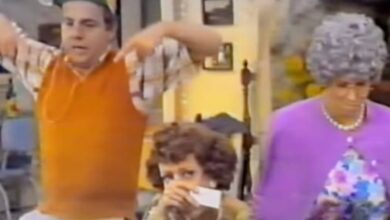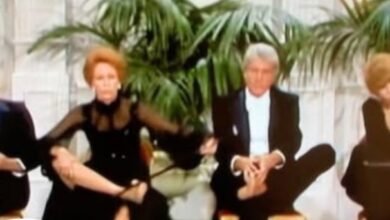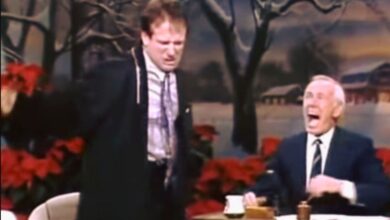Waylon Jennings’ “Are You Sure Hank Done It This Way” Redefines Outlaw Country and Shakes Nashville in 1975
Released in August 1975, Waylon Jennings’ “Are You Sure Hank Done It This Way” wasn’t just a hit—it was a musical reckoning. More than a tribute or a question, the song boldly challenged the direction of country music at the time. As the lead single off Jennings’ Dreaming My Dreams, the track quickly climbed to No. 1 on Billboard’s Hot Country Singles chart. With its driving rhythm, rebellious tone, and lyrics that directly addressed the commercialization of the genre, the song became an anthem for the growing Outlaw Country movement, earning Jennings both a new level of credibility and controversy in Music City.
Waylon Jennings was no stranger to rebellion. Born in Littlefield, Texas in 1937, he started out as a bassist for Buddy Holly and famously gave up his seat on the ill-fated flight that killed Holly, Ritchie Valens, and The Big Bopper. After years of frustration under the rigid control of RCA Nashville’s production model, Jennings fought for and eventually won full creative control over his recordings—a rarity at the time. What set Jennings apart wasn’t just his baritone growl or his gritty image; it was his insistence that country music stay honest, raw, and reflective of real life.
The inspiration for “Are You Sure Hank Done It This Way” reportedly came from Jennings’ growing discomfort with the spectacle that country music had become in the early ’70s. Rhinestones, tour buses, and a polished “Nashville Sound” dominated the scene, and Jennings saw it as a betrayal of the spirit of legends like Hank Williams. By invoking Hank’s name, he wasn’t disrespecting the past—he was questioning the present. The lyrics pose a pointed challenge: “Lord, it’s the same old tune, fiddle and guitar / Where do we take it from here?” That question hung heavy in every corner of country radio when the song dropped.
Recording the track was just as unconventional as its message. Produced by Jennings himself, the song was laid down in Tompall Glaser’s studio, a space that had become a haven for Outlaw artists tired of RCA’s sterile constraints. The instrumentation was raw—gritty lead guitar, thumping bass, and a relentless rhythm section that leaned more toward rock than the typical country shuffle. Jennings’ vocals, delivered in a near-spoken cadence, were intimate and almost confrontational. There were no sweet harmonies or orchestral strings—just grit and message.
Upon release, the song resonated with a younger, disillusioned country audience while ruffling feathers among traditionalists and industry gatekeepers. Still, it surged to the top of the charts and remained there for a week, spending a total of 16 weeks on the chart. The B-side, “Bob Wills is Still the King,” also received significant airplay, creating a double-sided hit that honored the past while challenging the present. Jennings had struck a nerve, and country music would never be the same.
Culturally, “Are You Sure Hank Done It This Way” ignited a conversation that had long simmered beneath the surface of Nashville’s soundboard. Jennings gave voice to a generation of musicians and fans who felt that the soul of country music was being replaced by commercial glitter. The song served as a manifesto for authenticity, spurring others like Willie Nelson, Kris Kristofferson, and Johnny Paycheck to take similar stands. It wasn’t just a hit single—it was a warning shot aimed at Music Row.
The success of the song propelled Jennings into a new tier of stardom. He was no longer just a respected artist—he became a symbol of resistance. Concert attendance surged. Dreaming My Dreams went platinum. Jennings became a central figure in the burgeoning Outlaw Country movement, a loose coalition of artists defined less by musical style than by shared defiance. Suddenly, being an “outlaw” wasn’t a marketing gimmick—it was a credible artistic stance, thanks in large part to this single.
Beyond Jennings’ own trajectory, the song helped reshape the genre itself. It laid the groundwork for the integration of country and rock aesthetics, encouraging a grittier sound that would inspire acts from Steve Earle to Dwight Yoakam to Sturgill Simpson. It also challenged the role of the producer and record label in defining an artist’s sound, giving momentum to the idea of artistic autonomy in country and beyond.
Many artists have paid homage to the track over the years. Clint Black covered it with reverence in 1999, and Hank Williams Jr. has referenced it numerous times in live sets. Shooter Jennings, Waylon’s son, often performs it as a way of keeping his father’s legacy alive. The song has also been sampled and interpolated in various ways, even popping up in film and television soundtracks that aim to capture a sense of rural authenticity with edge.
When Jennings released the song, he was also grappling with personal demons—substance use, industry pressure, and exhaustion from years of touring. But the fire behind “Are You Sure Hank Done It This Way” wasn’t dulled by turmoil. If anything, the emotional strain added layers of urgency and truth. The track stands not just as a critique of the music business, but as a raw document of a man reaching for clarity in a cluttered world.
Decades later, the song remains a touchstone. It continues to receive heavy rotation on classic country stations and regularly appears on lists of the greatest country songs of all time. New generations of country musicians still cite it as a defining influence, and it’s not uncommon to hear fans shout its chorus at live shows—proof that the message still resonates.
More than a musical statement, the track changed the business of country music. It marked a point when the power dynamic began to shift, giving more control to the artists and less to the industry machine. The production style—a fusion of rock textures with traditional country instruments—would become a blueprint for dozens of acts looking to break molds.
Although Jennings passed away in 2002, his legacy continues to swell, and “Are You Sure Hank Done It This Way” is often held up as the moment when everything changed. The Country Music Hall of Fame references the song in its Outlaw Country exhibit, and it’s a staple in retrospectives about the genre’s most pivotal moments.
Ultimately, the song’s lasting importance lies in its fearless confrontation of complacency. By asking a simple, provocative question, Jennings redefined what it meant to be a country artist. He reminded listeners that reverence for the past doesn’t mean silence in the present—and in doing so, he lit a fire that still burns in country music today.





